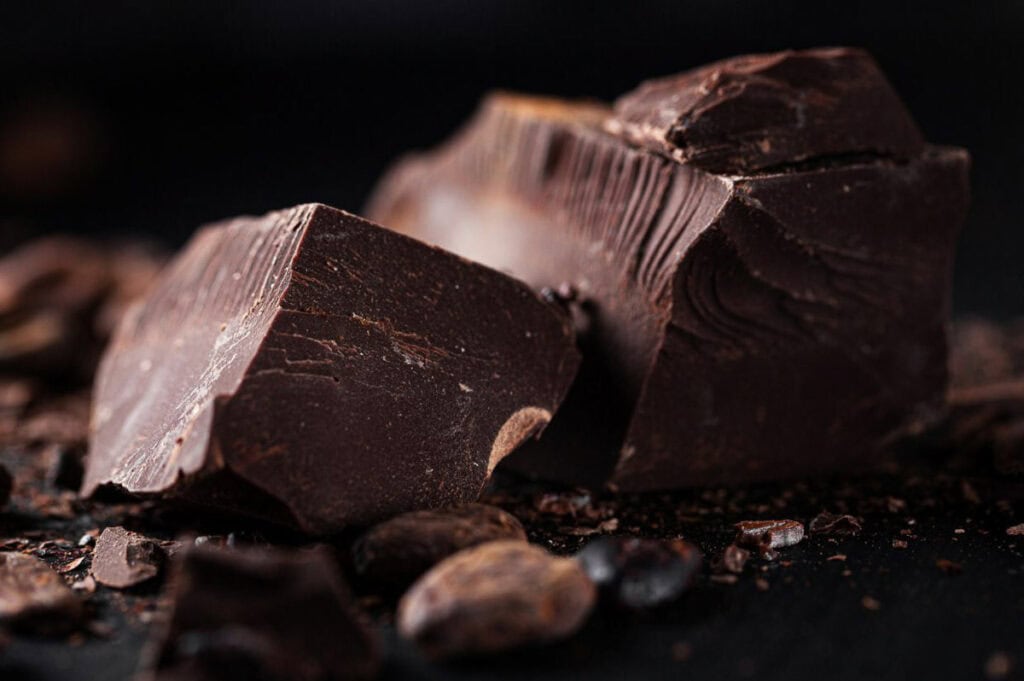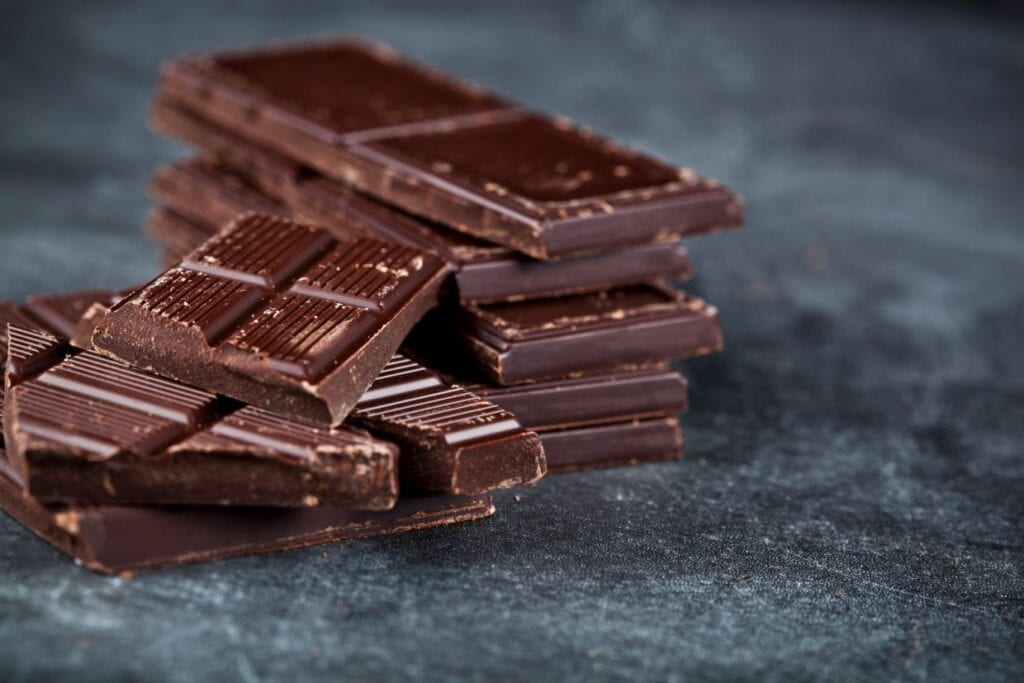Dark chocolate has a rich, bittersweet taste and smooth texture. Its story goes back centuries, from Mayan temples to today’s kitchens. This treat isn’t just tasty – it has a range of flavors from fruity to earthy. Let’s explore dark chocolate’s history and unique qualities.
Dark chocolate comes from the cacao tree in Mesoamerica. Ancient civilizations like the Mayans and Aztecs used cacao in rituals and as money. They made a bitter drink with ground cacao beans, water, and spices.
Cornell University explains that European explorers brought cacao to Europe in the 16th century. It became popular among the wealthy, and sugar was added to make it less bitter. Today, dark chocolate is enjoyed worldwide. Artisans use rare beans and unique flavors to make each bar special.
Dark Chocolate vs. Milk Chocolate

Dark and milk chocolate taste very different. Dark chocolate is bold and complex with bitter notes, while milk chocolate is creamy and sweet.
The main difference is the amount of cocoa. Dark chocolate has 50-90% cocoa solids, while milk chocolate has only 10-50%. This gives dark chocolate its bitterness and depth of flavor.
Dark chocolate is also a better nutritional choice. Krakakao states that it has more antioxidants, fiber, and minerals like iron and magnesium than milk chocolate, which has more sugar and fat. Dark chocolate is firmer and snaps cleanly, while milk chocolate melts more easily.
What Does It Taste Like?

Dark chocolate is initially bitter with a slight astringency. As it melts, you’ll notice subtle sweetness. This sweetness is less intense than in milk chocolate, letting other flavors shine through.
“The texture is so rich; there are many nuances of flavor depending on the type of dark chocolate you buy, where it’s from, the technique by which it was made, and the cacao percentage in it. It may seem bitter upon first blush, but the more you taste dark chocolate, the more its world opens up to you, and the more you diversify your palette.” — Ksenia Prints, At the Immigrant’s Table
Types and Varieties
Dark chocolate comes in many types, from mild 50% cocoa to intense 100% cocoa. Higher percentages mean a bolder, more bitter flavor.
Single-origin dark chocolates have unique tastes based on where the cocoa comes from. Try bars from Ecuador, Madagascar, or Venezuela to compare their flavors. Some popular types include:
- Bittersweet: Usually 70% cocoa or higher.
- Semisweet: Around 60% cocoa.
- Couverture: High-quality chocolate with extra cocoa butter, perfect for melting.
“Dark chocolate is a staple in my kitchen because it’s naturally gluten-free, dairy-free and packed with antioxidants. As a celiac and food blogger, I love that dark chocolate makes healthy living feel a little more decadent.” — Bella Bucchiotti, xoxoBella
Cooking with Dark Chocolate
Dark chocolate isn’t just for snacking. It can be used in many dishes, both sweet and savory.
- Baking: Use dark chocolate chips or cocoa powder in cakes, cookies, and brownies.
- Dessert: Melt dark chocolate and drizzle it over fruit or ice cream.
- Savory Dishes: Add a little dark chocolate to chili or mole sauce for richness.
Tips for Cooking with Dark Chocolate:
- Use high-quality dark chocolate with at least 70% cocoa.
- Melt it slowly over low heat to avoid burning.
- Pair it with bold flavors like coffee, orange, or chili.
- Sprinkle shavings on oatmeal or yogurt for breakfast.
- Pair it with cheese or nuts for a snack.
- Dip strawberries or orange slices in it for a simple dessert.
Health Benefits
Dark chocolate has powerful compounds that offer health benefits. Choose dark chocolate with at least 70% cocoa and enjoy it in moderation.
“When my patients ask if they have to give up chocolate, I explain that research has shown that consuming dark, not milk, chocolate may be associated with a lower risk of developing Type 2 diabetes. The key is moderation.” — Margaret Smith, RN, Diabetic Nurse Educator, Starts on the Inside
Flavonoids in dark chocolate are antioxidants that can lower blood pressure, improve blood flow, and reduce heart disease risk. A 2017 review in Frontiers in Nutrition found that regular dark chocolate consumption is linked to a lower risk of heart disease and stroke.
Dark chocolate is high in calories (about 170 calories per ounce), so enjoy it in moderation. No chocolate is essential for good health, but dark chocolate is a better choice than milk chocolate.
Dark chocolate’s journey from an ancient drink to a modern treat is full of innovation. Whether you’re enjoying a single-origin bar or using it in cooking, this complex treat is worth exploring. Choose wisely, savor slowly, and discover new depths of flavor with each bite.



